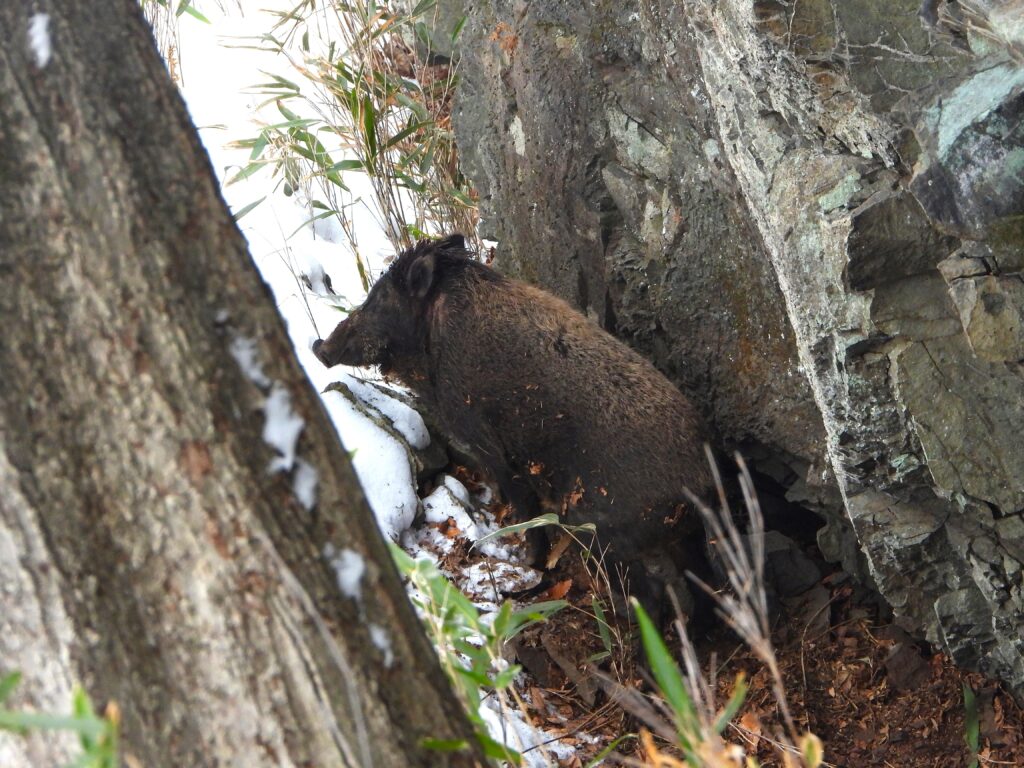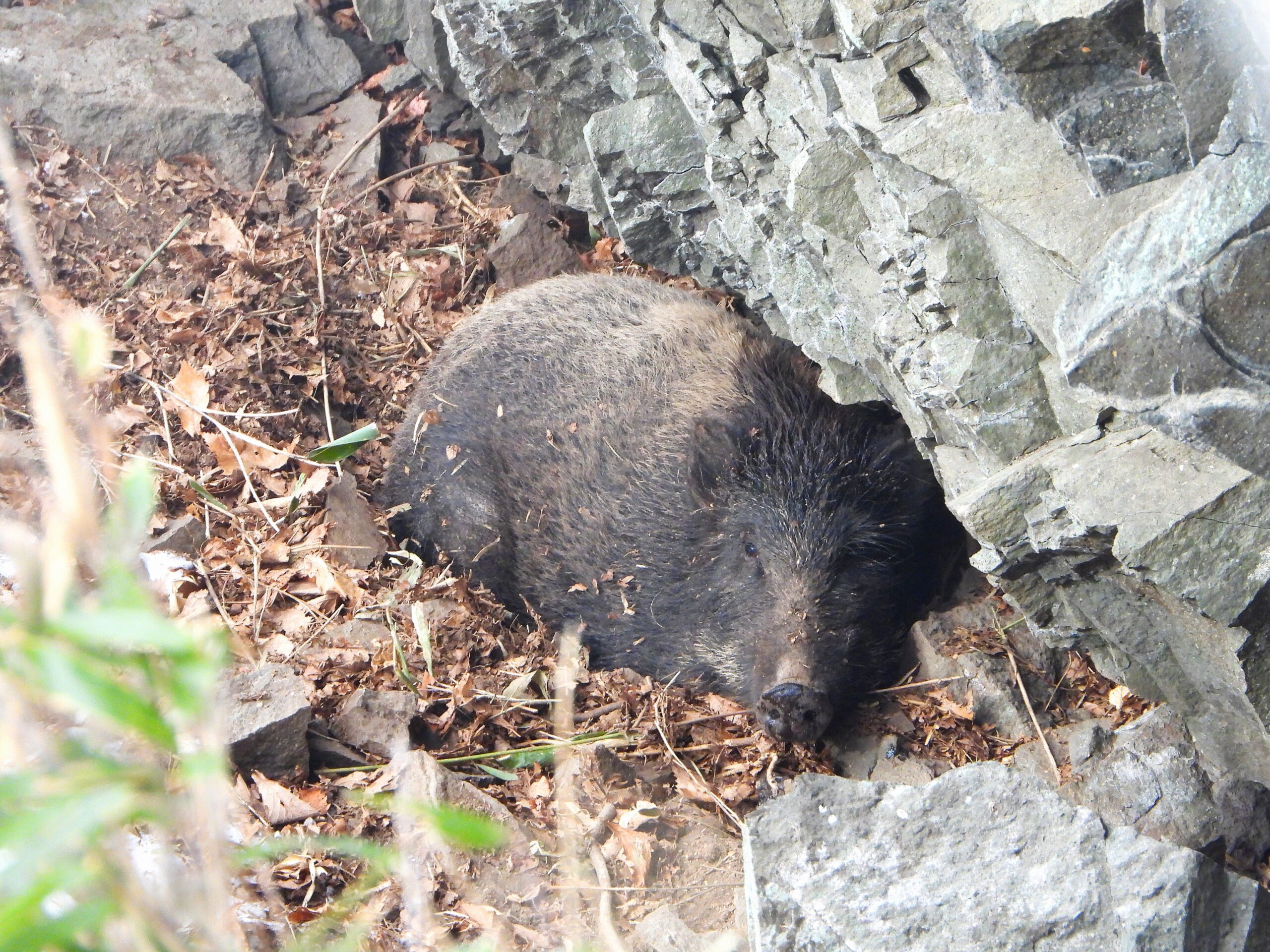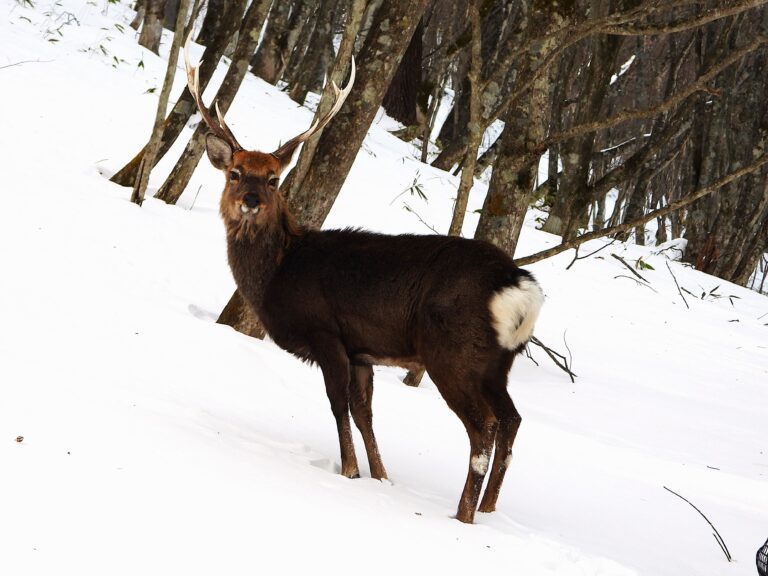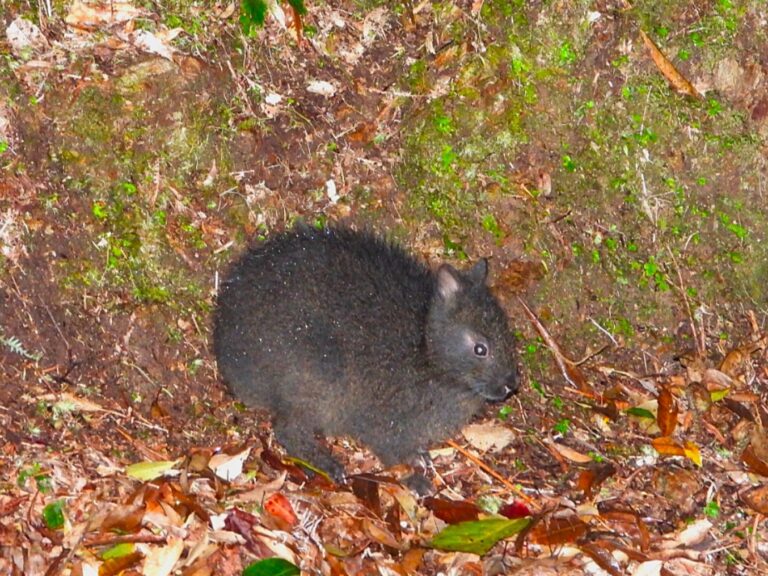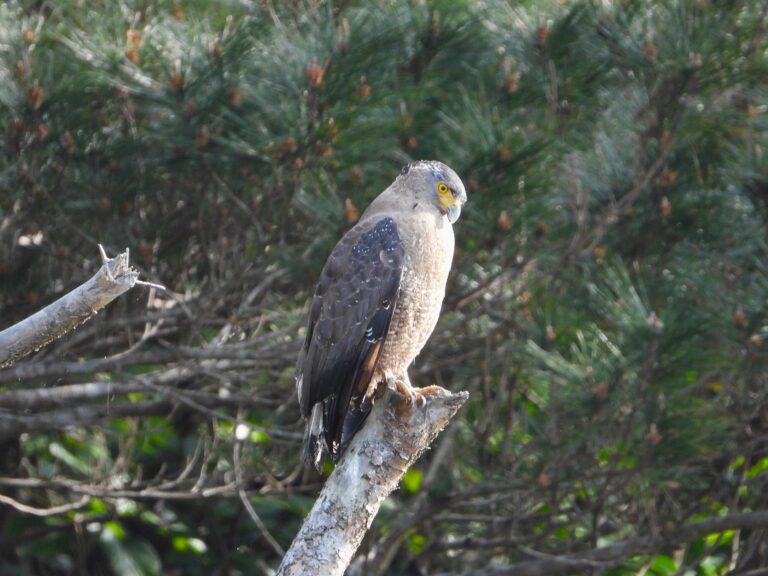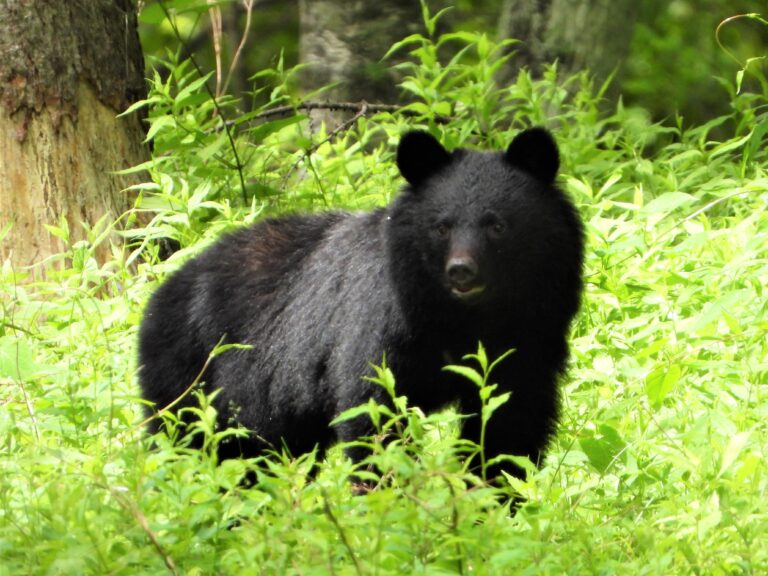Japanese Wild Boar (Sus scrofa leucomystax) – Wildlife of Japan
Japanese Wild Boar (Inoshishi) – Wildlife of Japan
Introduction
The Japanese wild boar is the native subspecies of wild boar on Japan’s main islands (Honshu, Shikoku, Kyushu). A separate, smaller subspecies—the Ryukyu wild boar—lives in the Ryukyu Islands. Together they’re part of Sus scrofa, a widespread species listed as Least Concern globally. In Japan their range has expanded northward in recent decades, increasing contact with people.
Appearance
Stocky body with coarse brown-gray bristles, short legs, and a thick neck. Adults have prominent tusks (larger in males). Newborn piglets are tan with dark longitudinal stripes—the “uribō” pattern—which fades by about 3–4 months.
Habitat & Distribution
In Japan, wild boars occupy forests, satoyama, bamboo thickets, river edges, and farmland edges across Honshu–Shikoku–Kyushu; the Ryukyu subspecies lives on Amami, Okinawa and nearby islands. As of 2018 they were present in every prefecture except Hokkaidō, and nationwide surveys show their habitat area has roughly doubled (≈1.9×) over ~40 years, linked with milder winters, abandoned farmland, and lower hunting pressure.
Behavior
Females and young form family groups called sounders, led by an older sow; adult males are mostly solitary outside the breeding season. Activity is crepuscular to nocturnal where people are nearby. They wallow in mud to cool and remove parasites and rely heavily on an excellent sense of smell when foraging.
Diet
Omnivorous and opportunistic: roots, tubers, bulbs, acorns and other hard mast, bamboo shoots, fruits, invertebrates, small vertebrates, carrion—and crops such as rice, sweet potatoes, and vegetables when available. Boars are a major contributor to agricultural damage in Japan.
Reproduction
Breeding peaks in late autumn–winter (roughly November–January). After a gestation of about 115 days, sows farrow in spring, typically producing 4–6 piglets in a nest of vegetation.
Conservation & Human–Wildlife Context
Globally Sus scrofa is Least Concern, but in Japan management focuses on conflict reduction (fencing, captures/hunting, not feeding in towns). Since 2018, classical swine fever (CSF) has affected wild boar and domestic pigs; authorities have used oral vaccines and intensive captures to limit spread, while Japan remains vigilant against African swine fever (ASF).
Author’s Impression
Boars are powerful, clever, and surprisingly quiet in the forest until they burst into view. Seeing striped piglets trotting after a sow is one of the most memorable sights in Japan’s woodlands—beautiful, but I always keep distance and avoid blocking their path. For most people, I actually recommend looking for signs such as wallows or tracks rather than close encounters, as it is safer and just as fascinating.
